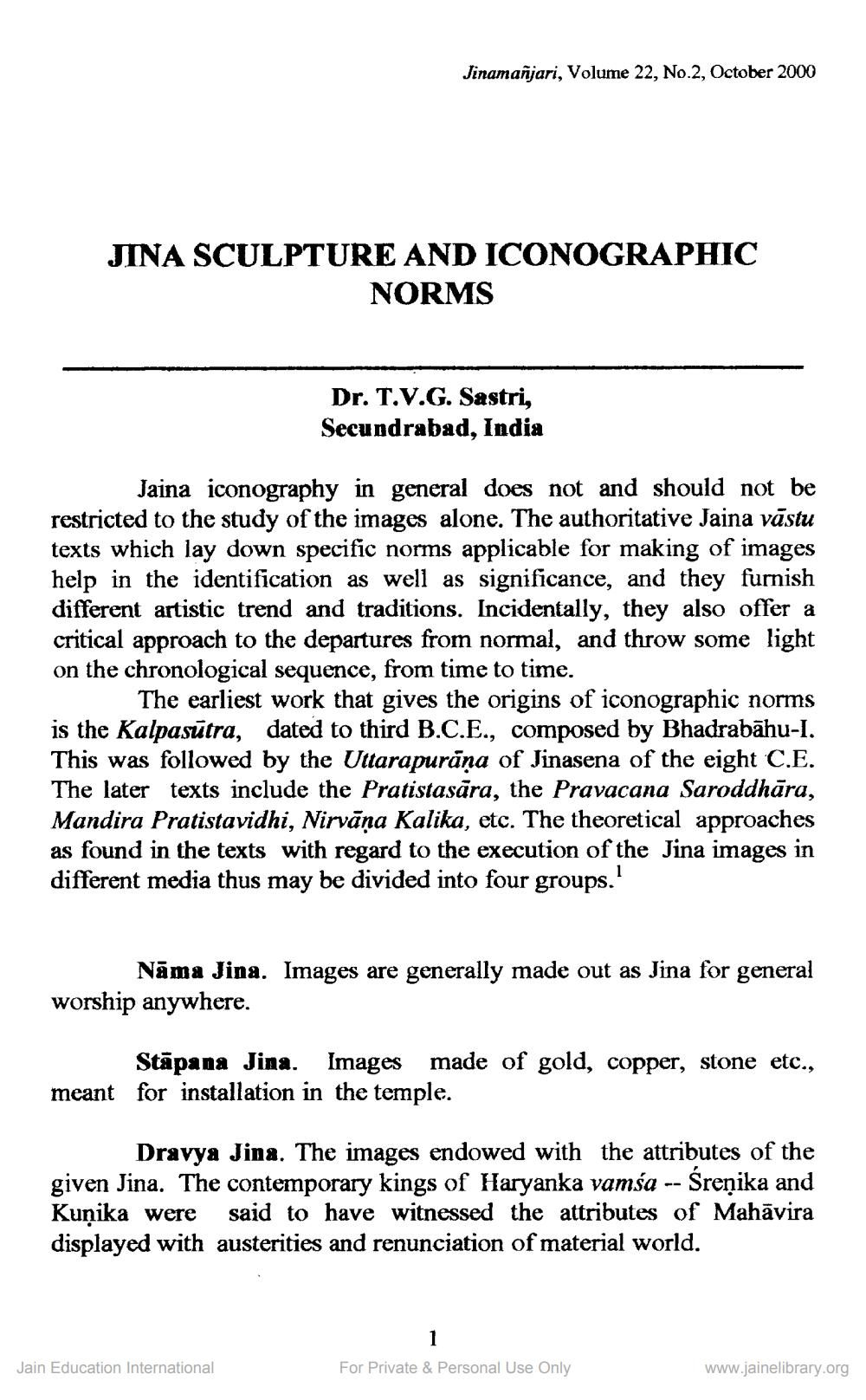Book Title: Jinamanjari 2000 09 No 22 Author(s): Jinamanjari Publisher: Canada Bramhi Jain Society Publication View full book textPage 5
________________ Jinamañjari, Volume 22, No.2, October 2000 JINA SCULPTURE AND ICONOGRAPHIC NORMS Dr. T.V.G. Sastri, Secundrabad, India Jaina iconography in general does not and should not be restricted to the study of the images alone. The authoritative Jaina vastu texts which lay down specific norms applicable for making of images help in the identification as well as significance, and they furnish different artistic trend and traditions. Incidentally, they also offer a critical approach to the departures from normal, and throw some light on the chronological sequence, from time to time. The earliest work that gives the origins of iconographic norms is the Kalpasūtra, dated to third B.C.E., composed by Bhadrabāhu-I. This was followed by the Uttarapurana of Jinasena of the eight C.E. The later texts include the Pratistasāra, the Pravacana Saroddhāra, Mandira Pratistavidhi, Nirvāna Kalika, etc. The theoretical approaches as found in the texts with regard to the execution of the Jina images in different media thus may be divided into four groups. Nāma Jina. Images are generally made out as Jina for general worship anywhere. Stāpana Jina. Images made of gold, copper, stone etc., meant for installation in the temple. Dravya Jina. The images endowed with the attributes of the given Jina. The contemporary kings of Haryanka vamsa -- Sreņika and Kuņika were said to have witnessed the attributes of Mahāvira displayed with austerities and renunciation of material world. Jain Education International For Private & Personal Use Only www.jainelibrary.orgPage Navigation
1 ... 3 4 5 6 7 8 9 10 11 12 13 14 15 16 17 18 19 20 21 22 23 24 25 26 27 28 29 30 31 32 33 34 35 36 37 38 39 40 41 42 43 44 45 46 47 48 49 50 51 52 ... 72
